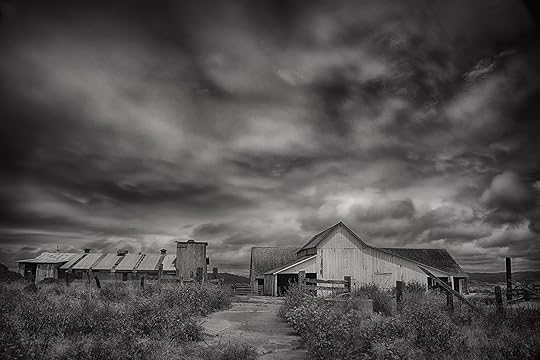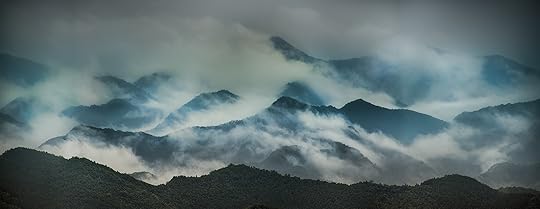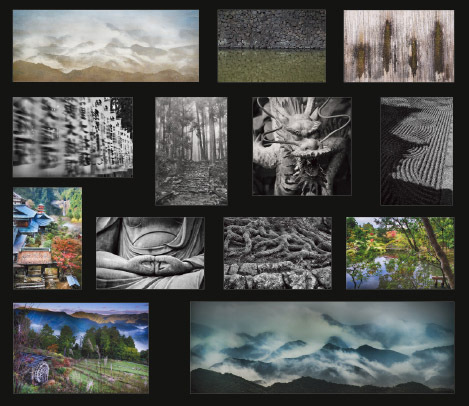Harold Davis's Blog, page 149
September 19, 2015
Ranch on Point Reyes
On Point Reyes in the spring, I photographed the details of the deteriorating buildings in the historic (but abandoned) D Ranch. Walking back towards my car I turned and saw the ranch buildings against a dramatic sky. There was no choice: I had to pull out my camera and tripod again. The ominous appearance of the clouds was exaggerated by adding a polarizer, and by creating a long exposure by using a neutral density filter.

D Ranch (Black and White) © Harold Davis
I like the image best in black and white, but the color version has some appeal as well.

D Ranch (Color) © Harold Davis

September 18, 2015
Last chance for an incredible trip-of-a-lifetime photo tour to Italy
We have room for two more in my very small “trip of a lifetime” photo tour of Italy beginning October 28 in Florence. This is your last chance to register for the trip since we need to confirm hotel reservations soon. In case you may still be considering this unique and never to be repeated adventure—or simply want to armchair travel instead of the “real thing”—I am providing a link to the detailed packet of logistics information that is going out to the lucky participants (PDF).
Trip highlights include: the Leaning Tower of Pisa, Pompeii, Herculaneum, the Bay of Naples, Capri, Anacapri, Positano, Cinque Terre, the Amalfi Coast, and much more!

The Village of Riommaggiore was founded in 1251 (photo via www.Cinqueterre.it).
We will be staying in 4-star hotels with licensed guides and transportation in deluxe private vans, and enjoying the luscious Italian cuisine.
Who could ask for more?
Click here for registration information.

You will be able to see this fresco for yourself when we visit Pompeii and the newly restored Villa of Mysteries (photo: Creative Commons, attribution-share alike, author: Mathais Kabel, via Wikimedia).
Here’s what some folks who have been with me on photo tours have said:
“Harold navigates foreign countries with astuteness and cultural sensitivity. His choice of guides, hotels, locations and restaurants is always impeccable. I returned from our trip with a much better sense of how to photograph in a diverse and wonderful array of locations, and had a great time with a compatible group while I learned.”
“Harold is a distinguished author of many books, educator, and photographer. It was amazing to spend so much one-on-one time with him in these great photographic locations.”
“Harold is a gifted artist, AND a great teacher! A rare combo, IMHO.”
“Harold is a peach. Great skill, without the ego of most master photographers. Travel arrangements were perfect.”
“One thing I really liked about the photo tour that Harold set up is that we had plenty of time to photograph in the best locations, and really prioritized when the light would be good.”

September 15, 2015
Strahov Monastery Library
The photo in this story is of the Philosophical Hall, part of the library of the massive Strahov Monastery in the hills above Prague in the Czech Republic which I just got around to processing. Strahov Monastery was founded in 1143, and is a Premonstratensian abbey.
It has been in more or less continuous operation since then (with a short break for the Jan Huss matter when it was attacked and pillaged by the citizens of Prague) until the communist takeover. This part of the library (the Philosophical Hall) was built in the late 1700s.
Under the communists it was turned into a National Literature Memorial. After the velvet revolution, the Strahov Monastery was returned to the Premonstratensian diocese, with restoration still underway in the famous libraries and also the monks devotional efforts to brewing quality beer.

Strahov Monastery Library © Harold Davis
In Prague, my apartment was a short distance from Strahov, and I listened to the monastery bells through the night, and ate at the open-to-the-public refectory most days. The specialty was beer, and everything was cooked in monastery beer, from beer-battered ribs, to beer-flavored ice cream.
To photograph the library required buying a special pass. I was allowed to use my tripod, but it was hard to get a few moments with an unblocked view into the Philosophical Hall, and ultimately I removed the other tourists, their cameras and their backpacks, from the photo using the Photoshop retouching techniques explained in my Photoshop Darkroom 2 (the major case study in that book was taken up with removing a friend’s leg and foot from a spiral stair in Havana, Cuba).
Related image: Great Hall Heidelberg University.
Some other images from Prague: Spires of Prague; Inside the Old Market Tower; House of Mirrors.

September 10, 2015
The poet among the photographers
My sponsor Zeiss has announced a spectacular new line of lenses, the “Milvus” lenses. As a prelude to the product launch, I got to work with two of the lenses, the Milvus 21mm f/2.8 wide-angle and the Milvus 100mm f/2 macro, when they were in pre-production. The photos in this story were made with these lenses, and the text below is from the article Zeiss has posted (titled The poet among the photographers) as part of the campaign launch with more about my experience working with the Milvus lenses.

When Flowers Talk © Harold Davis
A poet that photographs – that’s the answer Harold Davis gives when people ask him about his profession. He paints with light and captures the world as he imagines it – he is the impressionist among photographers. Rangefinder Magazine has described Davis as a man with a remarkable range of abilities. Clicking through his portfolio on his website, it’s hard to believe that all the pictures you see were taken by the same photographer.
This versatility is the reward for decades of being active in both the arts and technology. In the early 1990s, Davis stored his camera for a few years in order to start programming software and write books about technology. You can sense his abilities in both of these fields when he talks about his work. “A photograph only records the light reflected by the object,” he explains, “and with this light I try to be creative and make interesting patterns, or form light like a sculpture.” What he likes to do most is “paint” spectacular landscapes, flowers, old buildings and beautiful women. Painting can also be taken literally: Davis studied fine arts in the 1970s and sometimes resorts to traditional paint brush and canvas.

Floral Conference © Harold Davis
“As if painted – Harold Davis is famous for his photographs of flower blossoms”

Golden Gate Bridge from Battery Spencer © Harold Davis

September 9, 2015
Kreativ Fotografieren: Entfallen Sie Ihr fotografiches Potenzial

As you can see in the photo, I am very pleased with the German translation of Achieving Your Potential As a Photographer: A Photographer’s Creative Companion and Workbook. This is a beautiful and well-produced edition, thanks to Vierfarben, the German publisher of my book.
Click here for Kreativ Fotografieren: Entfallen Sie Ihr fotografiches Potenzial on the publisher’s website in Germany, and here for Achieving Your Potential As a Photographer: A Photographer’s Creative Companion and Workbook on Amazon.

September 7, 2015
A portfolio by Harold Davis: A Modern Pilgrimage along the Kumano Kodo

Panorama of the Kumano Sanzen Roppyaku Po © Harold Davis
A Modern Pilgrimage: Along the Kumano Kodo by Harold Davis is an artist book and portfolio of images that astutely blends old-craft hand traditions and materials with and cutting-edge new technologies to create an exquisite limited edition art book and art object that is completely unique. Read more.

September 6, 2015
Katie and Mask
Katie Rose loves to draw and paint, and make things like the mask shown in the photo. If you ask her, she’ll tell you she wants to be an artist when she grows up.

Katie and Mask © Harold Davis

September 4, 2015
From Heaven to Hell
Poet William Blake wrote about building a Hell in Heaven’s despite, and the cognitive dissonance of traveling in Japan often put me in mind of this poem of Blake’s (which also describes building a Heaven in Hell’s despair). In Japan, there’s an aesthetic that embraces remarkable beauty, and at the same time is able to create landscapes that bear a passing resemblance to Hell itself, from the vast human ant piles of the urban Japan to the industry on the shores of the Inland Sea.

Fern Forest © Harold Davis
Less the thirty miles apart as the crane flies, the peaceful, serene, and fern-filled landscape along the Kumano Kodo pilgrimage trail (above) somehow manages to reside in the same consciousness as the heavy industry in the port of Wakayama (below).

Shores of the Inland Sea © Harold Davis
I photographed the image of the Fern Forest on a wet and dripping day, with the sun starting to come through the overcast skies. Everything I needed was in my backpack, and I waited for the wind to still as I used my umbrella to protect the camera on its tripod from raindrops. Exposure data: 36mm, 1/13 of a second at f/8 and ISO 400, tripod mounted.
The photograph of industry on the shores of Japan’s Inland Sea is from the “Big Tuna” ferry heading from the port of Wakayama on Honshu to Tokushima on Shikoku Island. In processing this image, I regarded the industrial landscape as a kind of abstraction, almost mirroring the kind of calligraphy sometimes used in Japan. Exposure data: 300mm, 1/800 of a second at f/8 and ISO 200, hand held.
Related: Japan category on my blog.

September 3, 2015
Long Live Blur!
Much of the time we photographers are concerned with sharpness—how to make a photo that is “tack sharp,” how to manage depth-of-field (or even how to focus stack), how to get the best out of autofocus, and relearning the lost craft of manually focusing.

Silhouettes © Harold Davis
I’m here to tell you that intentionally creating an image with blur, one that is not in focus, or is focused on the “wrong” place, or in which the duration the shutter is open does not stop motion, can be a great expression of the craft and art of photography.
In Silhouettes (shown above) the blur was created by focusing extremely close in the foreground (with a telephoto lens) rather than on the figures that make up the composition.
So this is a focus blur, rather than a motion blur (the image was photographed at La Defense in Paris at 180mm, 1/500 of a second, f/6.3, and ISO 200). In point of fact, this image is about the semi-abstracted figures and the pattern of their relationship with each other. This negative-space pattern is only created because the figures themselves are blurred.
By the way, using a slow shutter speed to blur motion, or throwing a lens out of focus are far from the only way to produce a blurring effect, which is also sometimes called a “soft focus” effect. A classical approach to creating the soft focus look is to put something in front of the lens, such as a nylon stocking or a filter coated with Vaseline. Raindrops on a lens also work to blur the outlines and contours of the subject you are photographing.
Obviously, it is also possible to add various kinds of blur in post-production, although somehow I never get quite the same blurring look as when I generate my blurs in the camera.
So next time you get out there photographing, and if perhaps a sharply-focused image isn’t working, consider playing and experimenting with blur: motion blur, focus blur, shoving something in front of the lens blur. Long live blur!
You can get more of the context of my blurred Silhouette image in a related story: Stairs at La Defense.

September 1, 2015
Denali, the Great One, Alaska by Harold Davis
The long overdue , Alaska, and the resulting outcry from the State of Ohio (the birthplace of President McKinley), puts me in mind of my fine art poster Denali, the Great One, Alaska, published in the 1980s.
Denali, the Great One, Alaska was one of a trio of fine art graphic posters that I self-published as Wilderness Studio, Inc., following licensing and publication of my artwork first by Modernart Editions, then Bruce McGaw Graphics and Dryden Gallery. This initial trio included The Dance of Spring is the Dance of Life, and all three were wildly successful. In fact, thousands of copies of Denali, the Great One, Alaska went to Alaska, where they were sold by the leading chain of framing stores to locals and tourists alike.
This image of Denali was photographed from Wonder Lake, pretty much from the position of the famous Ansel Adams image, in the middle of the long sub-arctic summer night with faint alpenglow still illuminating Denali. The perspicacious viewer will note that the moon is wrongly sized and wrongly positioned relative to Denali. In the pre-Photoshop era I accomplished this visual sleight-of-hand using an in-camera double exposure. The landscape of Denali was photographed with a 35mm lens, I moved the camera, and photographed the moon on the same piece of film using a 200mm lens.
Obviously, were I able to be in the same position and to remake this image today, I wouldn’t need to resort to the rather incredible legerdemain implied by aligning two exposures with different lenses in-camera. But I would need to think ahead enough to make all the captures I might eventually need to post-process the image in keeping with my vision.
Actually, the biggest impediment to making this image were the mosquitoes, which around Wonder Lake assumed legendary Alaskan proportions. I had driven up the Alaskan Highway in my old 1960s Volvo Station wagon, which even then was an antique, and I got permission to drive it down the Denali road, and to camp at Wonder Lake until the light was right for me to photograph. But the full tale of my Alaskan adventures is a different story for another day.
By the way, in the years since The Dance of Spring and Denali, the Great One I have continued to create poster art. Giving me the sense that there may be some continuity in life and art, a great company that was a big distributor of my Wilderness Studio posters, Editions Limited, has published my posters recently. Click here to see my posters that Editions Limited has recently published.







